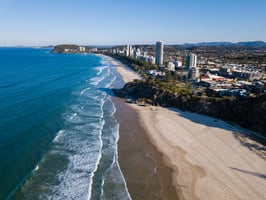Significant changes from Fannie Mae and Freddie Mac could impact your loan servicing process —...
Get a Peek Behind the Curtain on Flood Determinations
It’s 8:00 am on a Monday and you have a book of loan applications on your desk for a risk assessment, and the emails start flying. One of the biggest risk areas to your loan portfolio is flood, so where do you start? You go straight to your flood determination provider, right?
But, how do they assess your risk, and is it accurate?

Most flood determination providers use simple GEO-coding algorithms to quickly assess flood risk and get you what you need as fast as possible, but you’d be surprised how often those algorithms are fooled. While this technology is a great tool in the flood determination tool belt, it should never be the sole source of truth.
When assessing a property’s flood risk, the most important attribute isn’t speed but rather accuracy, and the fact is this: a high number of near-instant flood zone determinations are prone to error.
What’s the Cause (and Cost) of Inaccuracy?
A Flood Zone Determination (FZD) isn’t just a compliance document; there are real-world consequences to what’s printed on the paper. Businesses (and lenders) are left holding the bag when an uninsured property floods. There have also been instances in which property owners have sued their lenders for telling them that a property was not in a flood zone, only to find out the hard way that the determination was inaccurate.
Inaccurate flood zone determinations stem from a number of challenges. First, a property’s flood risk is most often determined using geo-codes, which are prone to error when the business has multiple properties on a parcel. Geo-codes are also error prone when a property is located in a rural area, or the loan is for new construction projects.
Consider the following–suppose that a property consists of multiple structures situated on land that borders a creek. While two structures are several hundred feet above the banks of the creek, one property is partially located in an area that could be prone to flooding. What’s the level of risk? Most companies would apply the same level of risk to all properties despite their actual locations. This leads to inaccurate determinations, which could cost you and your clients money. It could also create compliance violations.
Using that same scenario, let’s dive further into the risk determination. Let’s say the parcel of land is 10 acres. What point in that vast space is used to determine the risk? With geocoding, the point may be located by street address, literally in the middle of the street - with no weight given to the physical location of the structures.
Do you see how the problem magnifies?
In this case, some buildings might require coverage while others do not.
Leveraging Technology Everywhere it Makes Sense (and Nowhere that it Doesn’t)
Here at AFR Services, we use technology to assist in flood zone determinations only up to the point where the value of technology remains additive. This means that while most flood determinations are turned around instantly, we take the time to get complex determinations done right the first time.
Our clients benefit from increased accuracy and long-term cost savings with this comprehensive, stair-step approach to flood zone determinations. We ask the questions and catch the data points that elude other providers in our industry, and that’s why - for the past 30 years - we’ve served more than 1,500 banks and credit unions across all 50 states.
Don’t believe us? Send us your most difficult determinations and see the AFR difference for yourself.
Want to learn more?




